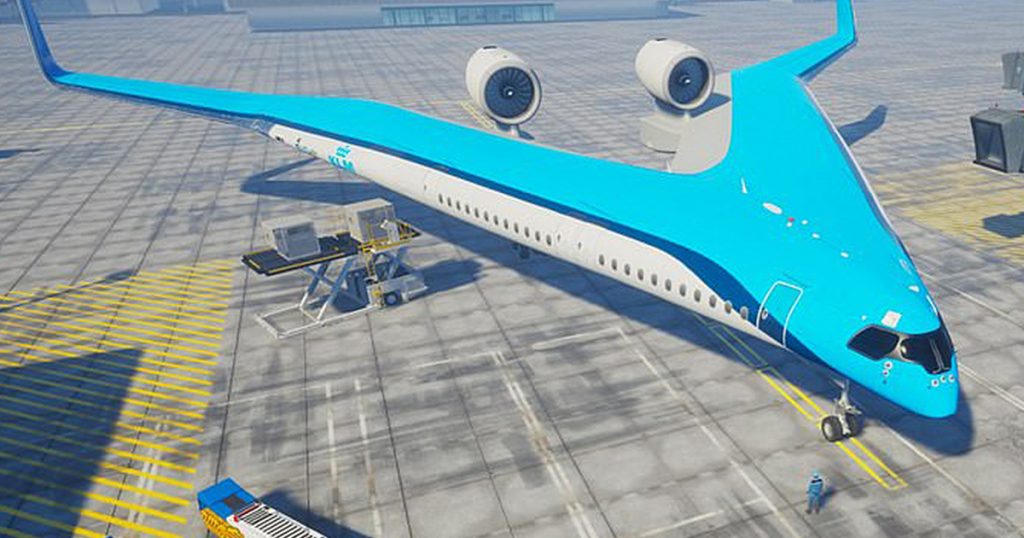Flying-V is a new airplane design that is currently undergoing development and will transform the air travel as we have come to know it forever. Dutch airline KLM is funding the development of this fuel-efficient airplane that has been named after the famous Gibson Flying-V electric guitar that has been used by different legendary guitarists.
The design offers identical wingspan as that of currently used planes while offering to carry around 314 passengers. However, the difference is how the wings are designed; the Flying-V widens diagonally backwards from the nose, thus creating the ‘V’ shape.
The Flying-V design was conceived by Justus Benad, who was a student at the Technical University of Berlin at that time. The design was then developed by researchers at the Delft University of Technology located in the Netherlands. The design sees that the passenger will be sitting along with the two wings. According to the airline, the Flying-V will use 20% less fuel as opposed to Airbus A350-900, although it will be carrying the same number of passengers.
CEO and president of KLM, Pieter Elbers said, ‘In recent years, KLM has developed as a pioneer in sustainability within the airline industry. We are proud of our progressive cooperative relationship with TU Delft, which ties in well with KLM’s strategy and serves as an important milestone for us on the road to scaling-up sustainable aviation.’
Project leader Roelof Vos stated that such an innovation was required as a stepping stone to achieving higher efficiency because aviation accounts for 2.5% of global CO2 emissions. Vos said, ‘The industry is still growing, so we really need to look at more sustainable airplanes. We cannot simply electrify the whole fleet, as electrified airplanes become way too heavy and you can’t fly people across the Atlantic on electric airplanes – not now, not in 30 years. So we have to come up with new technologies that reduce fuel burn in a different way. We’ve been flying these tube and wing airplanes for decades now, but it seems like the configuration is reaching a plateau in terms of energy efficiency.’
The plane, once completed, will be entering the service between 2040 and 2050.

